Psychedelic drugs - the future of psychotherapy?
Does the renaissance of research on psychedelic drugs herald the coming revolution in psychotherapy? What are psychedelic drugs? How can they help us treat mental disorders? What risks does the use of psychedelic drugs involve?
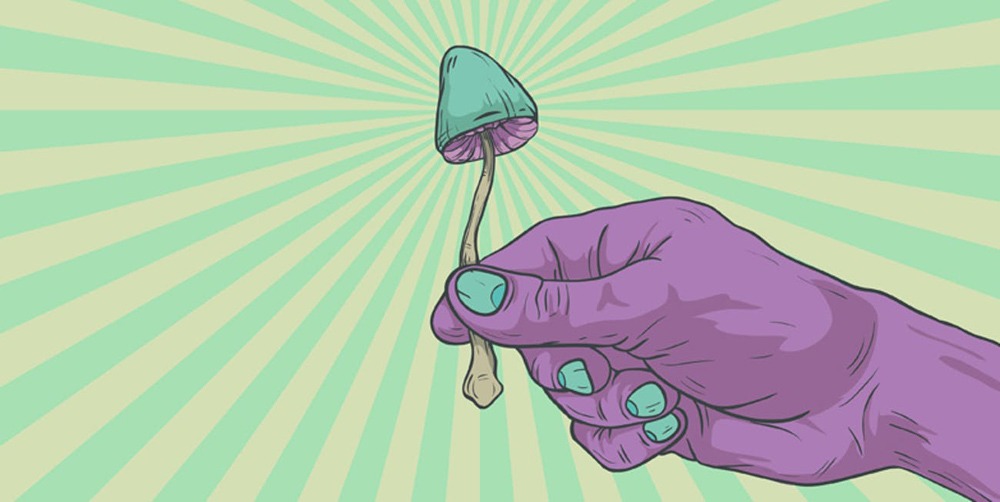
Revolution in psychotherapy
There is no doubt that we deal with a mental health crisis worldwide. In the United States, the suicide rate increased by 1 percent between 2000 and 2006 and by 2 percent between 2006 and 2016. In 2017, there were 47,000 suicides and 1.4 million attempted suicides (for more stirring statistics, check out my article Mental Health Crisis)[1] These are the highest suicide rates since World War II!
In the face of this new situation, our society is in great need of new solutions. We need innovative ways of treatment that will allow us all to deal with mental disorders, traumas, addictions and depression more effectively.
What if it does not require making a next generation of drugs, but rather getting a completely different perspective on something that nature has been abundant in for thousands of years?
These days, the topic of public discussion are psychedelic drugs - substances that, in their literal sense, "discover the mind." Well-known Western newspapers publish more and more articles that arouse the curiosity of people around the world:
- The New Yorker: The Trip Treatment
- The Guardian: 'They broke my mental shackles': could magic mushrooms be the answer to depression?
- The Guardian: Psychedelic mental health treatment expected to be approved in Australia within five years
- Time: This Will Change Your Mind About Psychedelic Drugs
Psychedelic drugs give us access to what is hidden deep down in our subconscious. Using them can evoke unique experiences that defy description and deeply affect the human psyche, having the potential to pull people out of depression, addiction and many other disorders.
To make it clear what type of drugs we are talking about, I will quote a simplified division of psychoactive substances put forward by Agnieszka Sieniawska, a lawyer and chairwoman of the Polish Drug Policy Network:[2]
- stimulants - amphetamine, cocaine, legal highs or caffeine;
- depressants - heroin, morphine or alcohol;
- cannabinoids - marijuana and hashish;
- psychedelic drugs - LSD, psilocybin, DMT, mescaline.
Psychedelic drugs include both natural plants (mushrooms and psilocybin truffles, ayahuasca or San Pedro cactus) and synthetic substances (LSD, MDMA). There are also psychedelic drugs such as DMT, which occurs naturally in fauna and flora (in the form of a specific 5-MeO-DMT) but can also be produced in lab conditions.
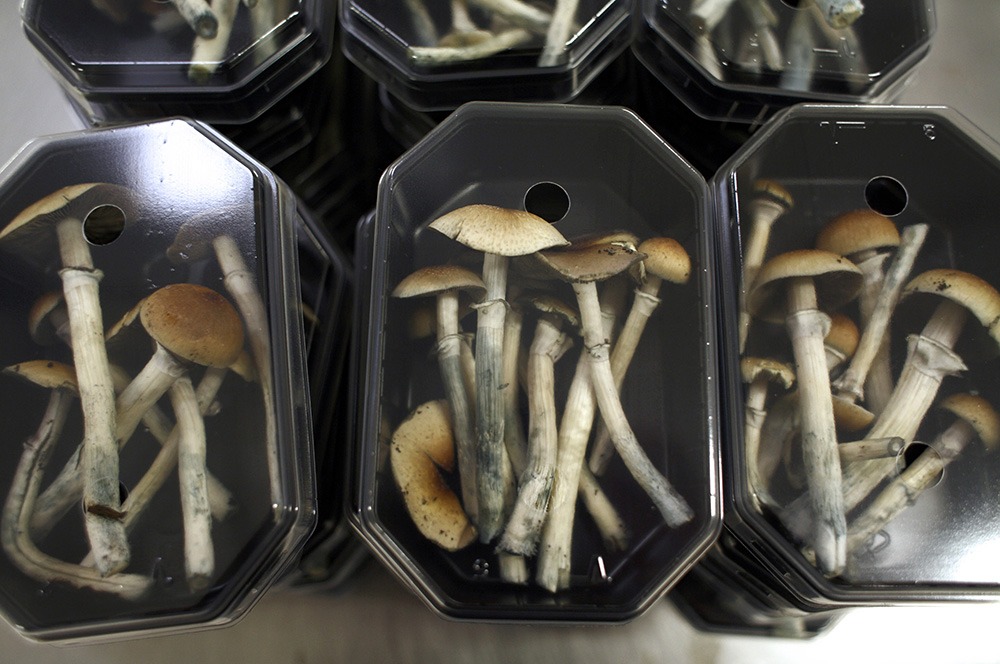
Unlike stimulants or depressants, psychedelic drugs are safe for our body. They are far less toxic to the body than alcohol or nicotine. “Magic mushrooms are one of the safest drugs in the world,” said Adam Winstock, a consultant addiction psychiatrist and founder of the Global Drug Survey. It does not mean, though, that psychedelic drugs do not carry any psychological hazards. What is more, this very low toxicity applies only to the most common psychedelic drugs - psilocybin mushrooms, LSD, DMT, ayahuasca or mescaline. Apart from them, one can come across other psychedelic substances, which are less common and can be harmful, such as DOC, DOB and bromo-dragonfly.
You can find more on psychedelic safety here.[3] I will also elaborate on this in my next articles.
The use of psychedelic drugs became the object of extensive research by psychotherapists over 60 years ago. However, after the delegalization of psychedelic drugs, this research was completely shut down, and only now more and more researchers in Western countries take up the work when they left off and devote their careers to exploring these substances.
Nowadays, new research centres spring up like mushrooms and come up with surprisingly positive effects in the use of psychedelic drugs in treating severe depression, addiction or complex trauma. In this respect, the year 2019 was a real breakthrough. In September that year, a modern research centre was opened at the John Hopkins University and granted with $17 million worth donations. While that same year a similar centre was set up at the Imperial London College in April with a less exorbitant but still impressive funding in the amount of $ 3.5 million.[4]
That's not all - in 2019, the American government institution FDA (Drug and Food Administration) designated the “magic mushrooms" therapy as a breakthrough therapy for of severe depression disorders[5], whereas MAPS (Multidisciplinary Association for Psychedelic Studies) runs the third (and final) stage of research on the use of MDMA substances in treating PTSD, i.e. post-traumatic stress disorder, which mostly affects veterans returning home from war (the colloquial name for MDMA is "Ecstasy", although pills bought on the street are not pure MDMA but also a combo of others, potentially dangerous chemicals.) Thanks to such promising effects of the above studies, the drug could be approved for legal use in the treatment of PTSD by 2021.
Of course, this is just a drop in the ocean of all such research initiatives worldwide. How come the world of psychiatry, psychotherapy and brain sciences has become so interested in drugs that governments of many countries consider most dangerous?
To answer this question, we might, among others, look into the accounts of patients who have had the opportunity to experience a psychedelic trip to their inner selves. Studies show that many of them, after just a couple of psychedelic-aided psychotherapy sessions, recover from trauma or depression, or even break free from their addictions.
Very often respondents define such a session as a life-changing experience and consider it as important event as the birth of their child or the death of their parent. It has been beautifully shown in the documentary "Trip of Compassion", in which we can take an inside look into MDMA therapy sessions taking place in Israel (the movie is available to watch here: Trip of Compassion)
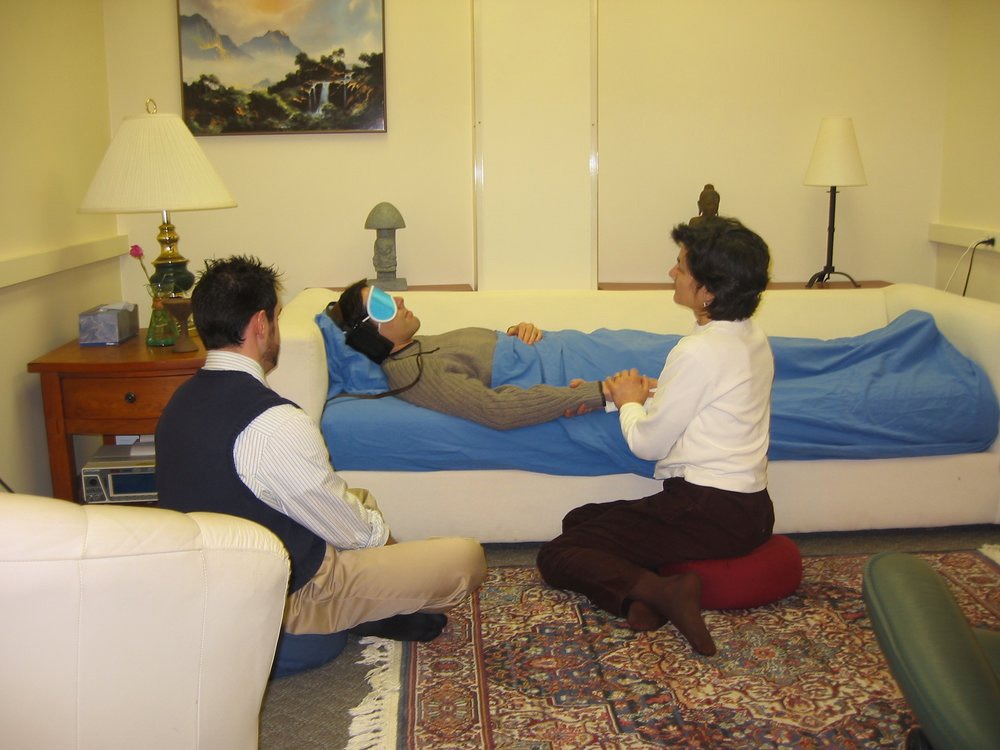
It seems we are heading for a real breakthrough. Some scientists call it a "psychedelic renaissance".
After a 40-year hiatus there is now a revisiting of research on psychedelic drug therapy throughout psychiatry, as well as a change in the general attitude to the role in therapy and relative safety of psychedelic drugs - both in medicine and in cultural mainstream. We can speak of a "psychedelic renaissance”.
My attitude was most influenced by imaginative words of a Czech psychiatrist, Stanislav Grof, who in the 50s studied LSD and its use in psychotherapy:
"Psychedelics are to the study of the mind what the microscope is to biology and the telescope is to astronomy."
What he said was very bold but, as you will learn from this article, not exaggerated at all, as it turns out that these naturally occurring substances allow us to look into our inner world in a way that was unattainable for us before.
Are we witnessing an upcoming revolution in the world of psychotherapy and psychological treatment in general?
Introduction to the world of psychedelic drugs
For the whole last year, what I have focused most on in my blog was sharing the knowledge on alternative and little-known methods of psychotherapy. My recent articles revolved around IFS therapy - now the time has come for a theme that I have had on my mind for a long time.
Some 3 years ago, I got fascinated by consciousness altering substances and the potential they show for being effectively used in psychotherapy. However, my enthusiasm was stirred by a lot of sadness, too, as I came across a lot of people who suffered for various psychological reasons and were totally helpless. At that time, I felt that it’s really worth taking a closer look at psychedelic drugs.
Having had my personal experiences with psychedelic drugs (which I will tell you more about in the next article), participated at numerous international conferences (e.g. the last Insight conference in Berlin organized by the MIND non-profit organization), read dozens of books on that topic (e.g. "How to change your mind” by Michael Pollan or "Psychedelic explorers guide "by James Fadiman) and talked hours with various psychedelic psychotherapists, I feel competent enough to present you with a reliable introduction to this controversial field.
Although in Poland it is still pretty much taboo, one cannot deny the growing interest in psychedelic therapy in Western countries. For instance, in the USA or Great Britain, this field is widely discussed and popular in the media (check out the links above). In our country, however, psychedelic drugs are still lumped by the public opinion into the same group of heavy drugs like heroin. Although I must admit that even here the situation is slowly starting to change as well. In 2019, the Polish Psychedelic Society was established to "introduce the law enabling the use of psychedelic drugs for medical and scientific purposes."
Reacting with scepticism and reserve is fully understandable. The use of such substances should be approached properly and responsibly. Excessive enthusiasm can make us not see the potential hazards of psychedelic intake. I hope that, staying open-minded and maintaining an attitude of care, zeal and an open mind, I will help you better understand this mysterious world of altered states of consciousness.
Psychedelic drugs and psychedelic therapy is a vast topic and it would be difficult for me to fit in everything in a single article. That is why, in the coming weeks, I will post here a whole series of articles devoted to that subject.
Here you have the agenda and general description of what you will find in each article.
- Psychedelic drugs - the future of psychotherapy? (on why psychedelic drugs evoked so much interest of psychiatrists in the 1950s, how they got on the streets of big cities and why they were banned)
- How does a psychedelic experience affect your mind? (on my impressions from my first psychedelic experience, what is "ego death" and how neuroscientists explain it)
- The risks of associated with the use of psychedelic drugs (on what may go wrong during a psychedelic trip, how safe these substances are for our body, who should not experiment with them at all and what a typical "bad trip" looks like)
- Psychedelic therapy (on what “set & setting” means and what psychedelic-assisted psychotherapy (PAP) is all about)
- How to prepare for a psychedelic trip? (on the mental set, what to do before the substance intake and how to act in the case of a bad trip?)
Here’s also a few comments:
- I want to make clear right that my intention behind this series of articles is not to jolly more people into psychedelic drugs, but quite the contrary, to show how, through a reckless use of such substances, we can risk our mental health. My goal here is to educate readers and thus reduce potential damage caused by psychedelic users’ unawareness, but at the same time prepare for a psychedelic experience those who would want to try it in the future.
- The war on drugs - prohibition - has done little but made the drug industry underground to flourish and fulfill the demand for illegal drugs in their own terms. Consequently, when buying illegal drugs on the streets you never know what you are really getting. I am totally against taking drugs that are bought on the black market, as it involves a lot of risks.
- I am aware that this article may encourage some to experience it on their own skin. However, for many people it will have the opposite effect. Psychedelic drugs are definitely not for everyone and there is a good chance that by reading this article you will satisfy your curiosity and feel no urge to go on a psychedelic trip.
- However, if you have already thought or are thinking about using a psychedelic, hold on for a moment and read carefully what follows: psychedelic drugs are powerful substances and we should not underestimate the risks. Without proper preparation and guidance, you may just as well have an experience that will have negative effects on your mental state. Therefore, do not make any decision about that until you have read the last article of this series (which will elaborate on how to prepare for a psychedelic trip) and use the additional materials that I will refer you to at the end.
Psychedelic drugs over the centuries
Psychoactive plants have been used by all cultures, except for Inuit, to alter state of mind for healing or spiritual purposes. No wonder Inuit culture is the only exception - Inuit are indigenous people living in arctic and subarctic areas where no such plants can grow.
Throughout human history, psychedelic drugs have been an integral part of life for many communities and tribes. In some cultures, they have been used as part of religious ceremonies and rites of passages, while in others – for healing the sick.
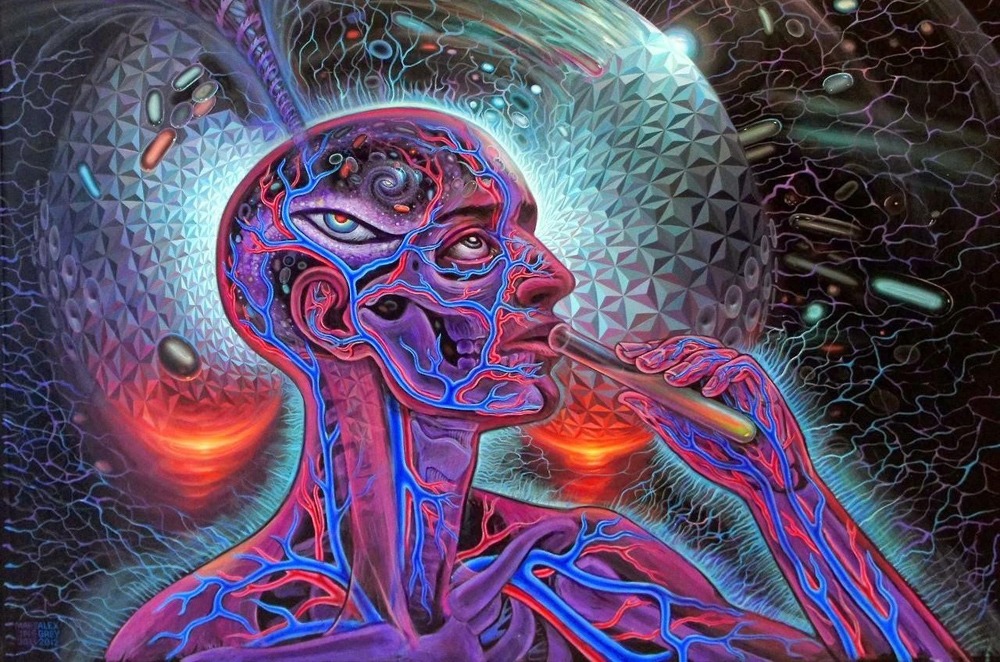
Psychedelic drugs have always been available for mankind, because they are naturally occurring - around 120 hallucinogenic plants have been identified across the world so far.
- Native Americans have used Peyote cacti in their rituals for 5,500 years. This plant, growing naturally in southwest Texas and Mexico, can provide potent sources of psychoactive mescaline.
- Its equivalent growing in South America is San Pedro Cactus (which also contains mescaline). In addition, many tribes have used the currently popular Ayahuasca.
- Magic mushrooms have also been used for thousands of years. In prehistoric times, they were used as religious tools also by Aztecs.
- Iboga is a shrub growing in Africa, containing naturally present psychoactive substance called ibogaine, one of the strongest psychedelic drugs.
In 1620, the Roman Catholic Church declared that using psychedelic plants to connect with the spiritual world was "a condemned superstition, as opposed to the purity and integrity of our Holy Catholic Faith." [6] The Inquisition brought dozens of allegations to Native Americans for the "crime" of using psilocybin mushrooms and Peyote cactus.
Native Americans claim that mushrooms take us to exactly the place where God dwells. They provide anyone who eats them direct access to the experience of divinity. The Church saw this as a threat to their sacraments, so the clergy decided to suppress the traditions of Native Americans. The wisdom about mushrooms has been hidden from Western societies since.
What happened in the 1950s and 1960s?
This was one of the reasons why the Western culture did not see anything special in these substances until the 1950s, when Albert Hofmann, a Swiss scientist who managed to create in his lab the psychedelic LSD, a substance chemically almost identical to naturally occurring psilocybin. He discovered it even earlier but at first he did not know what it could be used for, so he set the new substance aside until five years later,
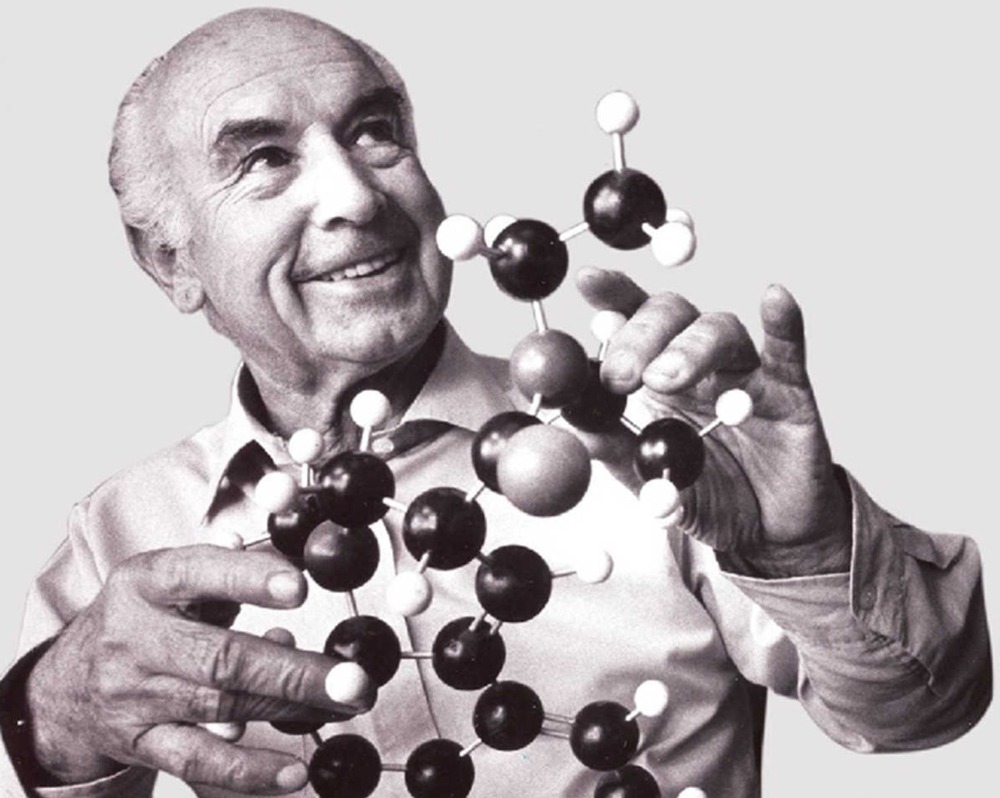
when he took another look and accidentally absorbed a small dose through his fingertips and, to hi surprise, experienced a radical shift in perception of the world. Hofmann began to have unusual visions. His thoughts appeared in the form of colors and images in his head, the sense of self began to vapor, he was filled with admiration for the natural beauty.
Hofmann was surprised by this discovery and felt it was something remarkable, but he did not know what the newly acquired substance could be used for. LSD was disseminated throughout the world by Sandoz, the company Hofmann worked for, to many psychiatrists in the hope that someone would come up with a use for it. According to the psychiatrists, who - for a few years after Hofmann’s discovery - successfully used LSD in psychoanalysis on themselves or their patients, its effects were astonishing. It took them years and years to ponder about what exactly is the LSD’s influence on human mind and what it can mean for psychotherapy patients.
In late 1950s, also magic mushrooms aroused great interest. The term itself was first used in 1957 in the headline of a 15-page article in the prestigious Life magazine[7]. It was written by R. Gordon Wasson, vice president of J.P. Morgan, who was on a hunt for psychoactive fungi for years after he had discovered that for hundreds of years they had been important religious objects of various communities and tribes. In 1958, Wasson organized the shipment of mushrooms to Albert Hofmann, who was the first man to isolate the two principal psychedelic mushroom compounds - psilocybin and psilocin. It turned out that the chemical structure of these molecules is almost identical to LSD.
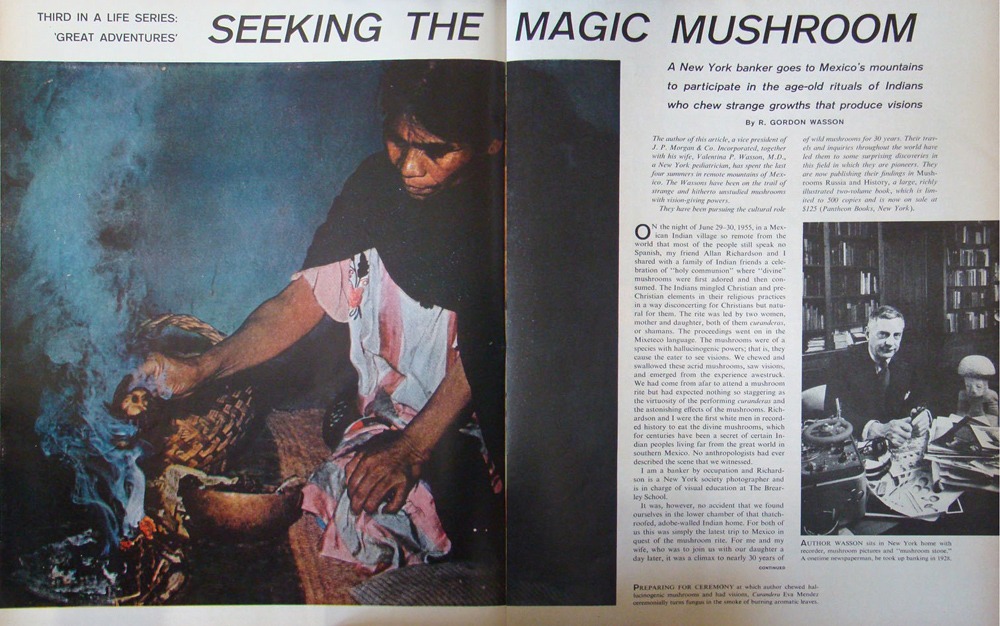
The world of psychiatry got fascinated by LSD very quickly, and various theories explaining the effects of this substance developed over the years. Numerous studies were conducted and it slowly became clear that Albert Hofmann discovered a powerful tool that could change clinical approach to treating mental illness and disorders.
Numbers prove there was a great interest in psychedelic substances at that time: more than 40,000 patients were administered LSD alongside research between 1950 and 1965, and more than a thousand scientific papers were published.[8] Researchers found that psychedelic drugs proved effective in treating addiction, depression, schizophrenia, obsessive compulsive disorders, fear of death and various kinds of neurosis. No fewer than six international conferences took place - all devoted to what many in the psychiatric community regarded as a wonder drug.
One of the experiments carried out in 1962 was the March Chapel Experiment (also known as the Good Friday experiment). It was conducted by Walter Pahnke at Boston University‘s Marsh Chapel, under the supervision of Timothy Leary. Twenty graduate degree divinity student volunteers from the Boston area were randomly divided into two groups. Half of the students received mushrooms containing psilocybin, while a control group received only a placebo. 8 out of 10 student volunteers who received psilocybin (Magic Mushrooms) reported profound mystical experiences (they would walk all around the church going on about that God is everywhere!). Only 1 person in the placebo group reported to have had such an experience. One of the study’s participants who was given psilocybin said: “Until the Good Friday experiment, I had no personal encounter with God”[9]
Having doubts about the quality of this study, Roland Griffiths, professor of psychiatry and neuroscience at Johns Hopkins University School of Medicine, reprised the work done by Pahnke and conducted a similar study at Johns Hopkins University in 2002. In 2006, he published the results, which were very similar to those obtained during the March Chapel Experiment, in a landmark article titled “Psilocybin Can Occasion Mystical-Type Experiences Having Substantial and Sustained Personal Meaning and Spiritual Significance.” Fourteen months later, half of the participants rated the psilocybin session among the top five most spiritually significant experiences of their lives.[10]
One of the scientific works from 1967 aimed at gathering and summarizing all scientific papers published between 1953 and 1965 on the effectiveness of psychedelic supported therapy. Its efficacy was rated as follows: 70% for neurosis, 62% for depression and 42% for obsessive compulsive disorder. LSD was also deemed a miracle drug for alcoholism.
Just think of how surprised psychiatrists and psychotherapists must have felt when they started working with substances of such remarkable potency and therapeutic potential. It all was happening long before scientists produced the first anti-depressant drug, therefore at that time patients had no access to any medicine that could alleviate their mental suffering. I suppose many therapists had high hopes about the use of psychedelic drugs in psychotherapy, which motivated them to run further research.
Unfortunately, shortly afterwards, things took a completely unexpected turn, and the opportunity to continue research was ruthlessly taken away from the scientists.
How LSD got on the streets
To put it mildly, in the 1960s the situation began to get out of control.
Even in 1959, low-dose LSD therapy was gaining popularity in Los Angeles. Famous actors began to ramble about its effectiveness, the media gladly published interviews filled with such stories. Psychedelic drugs began to be widely discussed by the society and everybody wanted access to them. An increasing number of patients began to ask their therapists for prescribing them LSD, and very soon anyone could buy this substance on the streets of Los Angeles.

Timothy Leary, a psychologist and former professor at Harvard, contributed greatly to the popularization of LSD among young people. He publicly encouraged students to use of psychedelic drugs as a method of expanding one’s consciousness. His slogans became the motto for the hippie movement emerging in the second half of the 1960s (everybody took LSD at music festivals at that time). US president Richard Nixon dubbed Leary "the most dangerous man in America”.
For many people trying LSD for the first time this experience was something unprecedented and extraordinary. In addition to the ecstatic sensations evoked by visions and sensual impressions, psychedelic experience gave people a chance to break free from the shackles of one’s mind. Many scientists say that psychedelic drugs allow us to go beyond from the limiting social patterns.
Perhaps this is why the number of young people who refused to participate in the Vietnam War began to grow so quickly (forced general draft was carried out at that time). More and more young people defied social order in other areas of life. The loss of authority and real power over the citizens became a serious problem for the US government.
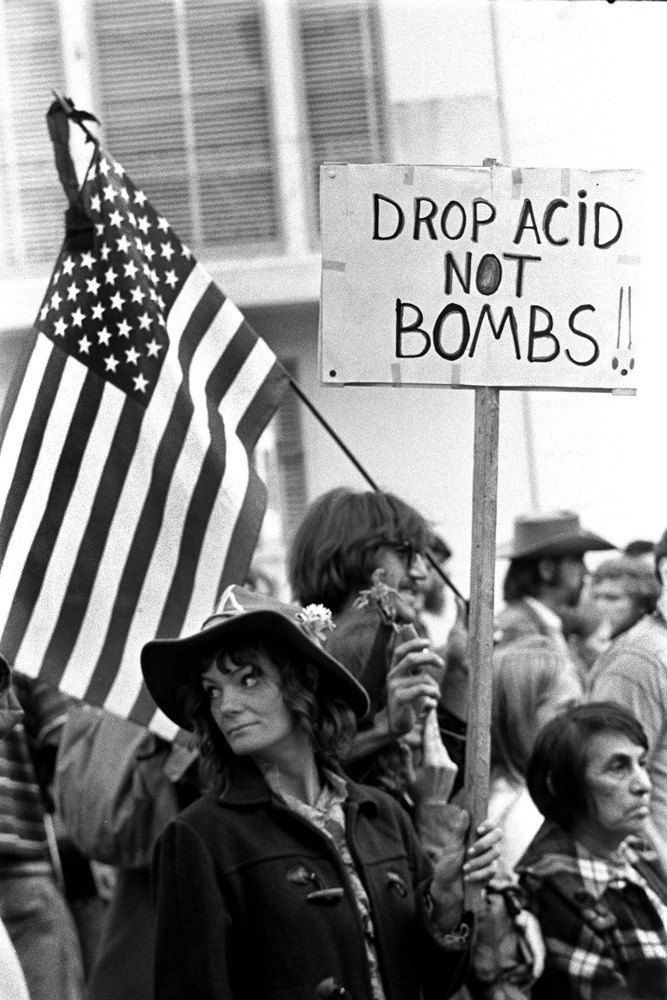
Together with the proliferation of unauthorized use of psychedelic drugs by the general public, more and more concerns emerged about the damages it can cause. Some of them were actually true. Psychedelic drugs can be dangerous if misused, especially when administered to a first-time user without adequate preparation and supervision, and lead to emotionally disturbing experiences called bad trips. Unfortunately, many of these stories were totally untrue (people often withdrew their statements) but, as always, false rumors disseminate fast and stick in people’s heads for long.
“Wrong and inappropriate use has caused LSD to become my problem child. (…) I believe that if people would learn to use LSD's vision-inducing capability more wisely, under suitable conditions, in medical practice and in conjunction with meditation, then in the future this problem child could become a wonder child."
Around 1965, the media panicked describing and published false urban legends and misconceptions about psychedelic drugs. Society started to consider them as a serious threat. Newspapers catchy fake headlines only increased social panic around psychedelic drugs.
Finally, LSD was made illegal in the US in 1966. It was dubbed a drug of a high potential for abuse, with no currently accepted medical use in treatment. All funds for research on psychedelic drugs were suddenly withdrawn.
According to Michael Pollan (author of "How to change your mind", the New York Times bestseller on psychedelic drugs), what has contributed most to this turn of events was that in the beginning of 1965 the exuberance surrounding these new drugs gave way to moral panic and the fact that they had real potential for causing confusion in social order.
The Food and Drug Administration shut down all research. It was not until the early 2000s that the interest in the psychiatric use of psychedelic drugs was renewed. Several scientists put a lot of energy into making further research possible and publishing the results to the general public. A psychedelic renaissance began and continues to this day.
We will get back to the events of recent years and forecasts of what to expect in the following years in the third article of this series, while in the next article, we will take a look at the psychedelic experience from the inside out.
I will also tell you about my first psychedelic experience on psilocybin truffles, psychological effects of psychedelic drugs (e.g. the phenomenon of ego death) and the standpoint of the brain sciences on that.
Przypisy
1. The US suicide rate is at its highest since World War II - CNN ↑
2. Polish Psychedelic Society founded. Is it crazy? No, it is serious. ↑
3. How to change your mind, Michael Pollan ↑
4. Johns Hopkins Opens New Center for Psychedelic Research - The New York Times ↑
5. FDA grants Breakthrough Therapy Designation to Usona Institute’s psilocybin program for major depressive disorder - Business Wire ↑
6. How to change your mind, Michael Pollan, s.109 ↑
7. Wasson RG. Seeking the magic mushroom. LIFE. May 1957. Seeking the magic mushroom. LIFE. May 1957. ↑
8. How to change your Mind, Michael Pollan ↑
9. March Chapel Experiment March Chapel Experiment ↑
10.Griffiths RR, Richards WA, McCann U, Jesse R (2006). "Psilocybin can occasion mystical-type experiences having substantial and sustained personal meaning and spiritual significance” ↑
